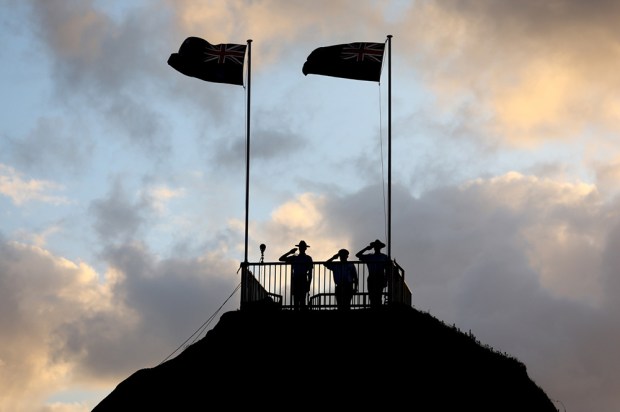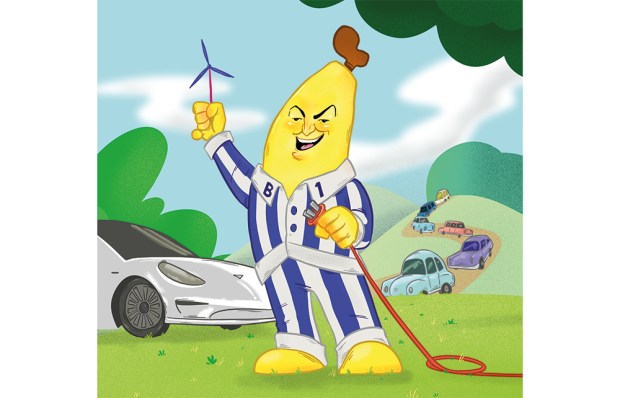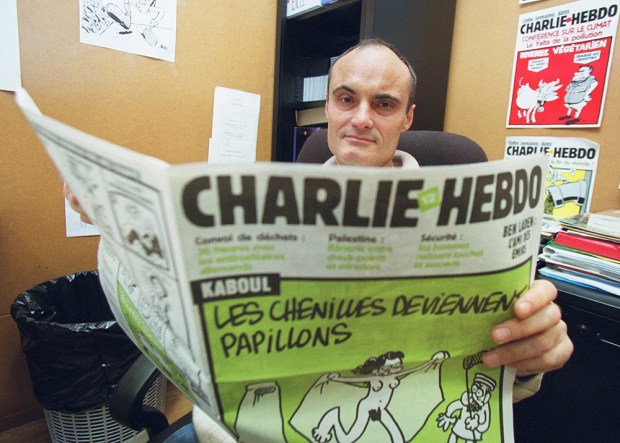2015 Thawley Essay winner
Each year the British based Economist Intelligence Unit publishes a list of the ‘world’s most liveable cities’. In the list published on August the 18th in the Economist Magazine, Australia had four cities, Canada three, and New Zealand one, all included in the top ten. In other words, of the thousands of cities around the globe, eight of the top ten on this list were developed by the British in the late eighteenth or early nineteenth centuries. Clever Poms.
The cities in question all had something else other than their origins in common. Their establishment involved the dispossession of the native populations. Australians seem to like stains. In the nineteenth century we had the ‘convict stain’. Today it has been replaced by what one might call the ‘dispossession stain’ and rarely a week goes by where we don’t see on our television screens a motley group of people wandering around chanting that the land they are walking over ‘always was and always will be aboriginal land’. Perhaps.
It is a sad fact that most Australians today have never heard of Warri and Yatungka. They briefly achieved unwanted fame in the late 1970s as the last of the desert nomads. Their story is an enduring testimony to the power of love and the grandeur of the human spirit and it is a tale that should be familiar to all Australians.
Warri, an adult male, and his partner, Yatungka, were from the Mandiljara tribe which had survived in the Gibson Desert in the north of Western Australia for thousands of years. This region is one of the most remote and harsh environments in Australia and the tribes who lived there were left alone well into the middle of the last century. The Desert People, as the inhabitants of the Gibson and adjoining Great Sandy Deserts were known, were among the last people on earth to engage with the modern world. In the 1950s and 1960s there were still the remnants of Aboriginal tribes living a traditional life style. They were a steadily diminishing group of no more than one or two hundred people who followed practices and beliefs that had not changed since the dreamtime. The Mandiljara tribe were such a group and thus Warri and Yatungka were subject to the tribal law which prohibited their relationship. Eventually, regardless of her love for Warri, Yatungka would be compelled to marry someone in accordance with tribal law and who had the approval of the elders.
Rather than lose each other, they stole off one night and left their traditional lands and entered the land of the Budijara people where they were given sanctuary. When the Mandiljara elders saw that the two had eloped they sent Mudjon, a friend of Warri’s, to track the couple down, remind them that they had broken tribal law, and bring them back. Mudjon found them but was unable to convince them to return. Instead Warri and Yatungka took the opportunity to escape deeper into the desert and spent most of the next thirty years wandering naked and alone from water hole to water hole in search of what little food and water the desert had to offer.
While the couple endured their exile, the depopulation of the West Australian deserts continued. By the 1970s they were possibly the only two residents of a desert which was larger than England. But they had not been forgotten.
In 1976, an expedition into the Gibson Desert noticed smoke on the horizon and, upon return to base in Wiluna, the expedition leaders reported the sighting to the Mandiljara elders. They concluded that the smoke could only have come from a fire made by Warri and Yatungka. Mudjon persuaded the expedition members to mount a search for the couple who were eventually found weak, emaciated and struggling to survive in what was the worst regional drought for almost a century.
Mudjon eventually convinced the couple that they would not be punished for having breached tribal laws. They were persuaded to return with the expedition to re-join the remnants of their tribe on the edge of civilisation in the West Australian town of Wiluna. Their discovery made news around the world, as they were thought to be the last of the Australian Aboriginal nomads.
Less than a year after they were located, Warri died and Yatungka followed him a few days later.
In fact there were a handful of Pintupi and Walbiri people who came in from the desert subsequent to Warri and Yatungka, but none came with a story as romantic as that of the Mandiljara couple who, inevitably, were described in the press as ‘star crossed lovers’. A statue commemorating the couple is situated on the outskirts of Wiluna.
Despite the poignancy of their story, despite their historical significance, Warri and Yatungka are largely forgotten and are fast becoming a footnote to history and it is worth asking why this tale has not had a greater impact upon the Australian sense of identity and why it has not embedded itself in the Aboriginal mythology.
Exactly who were the last of the Aboriginal nomads to survive in the deserts of Western and Central Australia may never be known. What is beyond doubt is that by the 1980s those desert people who lived a traditional lifestyle were gone forever. In their place, came many people of part aboriginal descent. Of these, many prefer to ‘identify’ as being aboriginal and there are, among them, those who make a living out of that claim; some having established successful and lucrative careers as ‘aboriginal community leaders’. In reality, many of these leaders have little more in common with genuine Aboriginal culture than a bunch of people dressed in white togas parading around Stonehenge have to do with ancient druids. What contemporary indigenous leaders and their media acolytes ignore is what the anthropologist Mervyn Meggitt characterised as a ‘metayphysical monism that regards man, society, and nature, as interlocking components of a larger functionally integrated totality’. In other words, you can no more be part aboriginal than you can be part Catholic.
For contemporary indigenous leaders, a close examination of the story of Warri and Yatungka is best avoided as the contrast between the life that heroic couple chose to live, and the reason they chose that life, stands in stark contrast to the reality of the lifestyles of contemporary indigenous communities.
The Australian community as a whole has shown a similar lack of interest in the story of Warri and his amazing wife. We seem to prefer the empty rhetoric of remembering ‘the traditional custodians of the land’ to remembering in any detail the dispossession of the land on which our cities are based. The four Australian cities mentioned earlier as being amongst the most liveable in the world are Sydney, Melbourne, Perth, and Adelaide, which between them hold almost half of Australia’s entire population.
How many of the residents of those cities know anything about how it was that their cities became so successful? How many have a genuine understanding of the way of life and cultural values of the people whose land our predecessors stole?
Aboriginal ‘experts’ who populate our media today constantly claim that theirs is the ‘oldest surviving continuous culture’. This is debatable. If there is an ‘oldest surviving continuous culture’ it is possibly China where a writing system has evolved alongside a belief system over the past 8,000 years. No other culture in the world can exhibit the continuity that is evidenced in Chinese civilisation. Tragically, for Aboriginal communities, their languages, beliefs and ways of life – the things that made them who they were – were largely destroyed by the fatal impact of the arrival of the white men over two hundred years ago.
And this is why the story of Warri and Yatungka is important for all of us. Theirs is a story of survival of two people who were able to support themselves in one of the harshest environments on this planet with nothing more than a few wooden spears. It is a story of two people who chose exile from their own community because the love they had for one another transcended the strong ties they had with their community. In this there is a universality which should ensure their undying fame.
Instead, Australians prefer to remember mateship as exemplified by Simpson and his Donkey saving diggers in Gallipoli, or the larrikin resistance to authority of Ned Kelly. Uncomplicated stories which are easily digested and which can safely be served up to the kiddies.
It is time we asked honestly what has been achieved by or for aborigines in the half century since the freedom rides of 1965. In the spring 2015 edition of Meanjin, Professor Ian Anderson notes the persistent failure of past governments to solve problems of social dysfunction in aboriginal settlements (‘The Crisis of Australia’s Indigenous Policy’ Meanjin Quarterly vol.74). Anderson notes that various policy initiatives of the Howard and Hawke governments, however well meant, have all failed to meet their own objectives. One might also ask what the famous speeches and policy initiatives of the Keating and Whitlam governments have achieved? The professional Aboriginal mob continue to enrich themselves while the conditions in indigenous settlements continue to deteriorate. In a recent edition of The Spectator Australia, Angela Shanahan put it bluntly.
‘…the worst…violence, physical and sexual, against women and children in Australia, indeed anywhere in the West, occurs in indigenous settlements wracked with drugs, alcoholism, pornography, with no intact families but that doesn’t fit the gender rubric (or the racial one), so those terrible facts are ignored’ (The Spectator Australia 10 October 2015).
For over half a century the plight of the indigenous Australians living in remote settlements has continued to deteriorate. Despite billions of dollars spent by governments, despite the establishment of job creation schemes for professional aborigines such as ATSIC, despite innumerable public enquiries, nothing has really improved in the remote indigenous settlements. No other branch of Government could survive fifty years of failure but ‘Aboriginal Affairs’, in its various manifestations, totters on achieving nothing. We must acknowledge that more of the same will only produce more of the same.
It is time all Australians asked some hard questions about why we can build some of the most liveable cities in the world but cannot repair the third world hell holes full of disease, drugs and despair in which some of our citizens live. It is time for a bit of honesty in the debate.
Warri and Yatungka are among the last of the nomads to come out of the great deserts of the Australian centre. They are therefore perhaps the last link with what until their deaths in 1979, could have genuinely been called ‘the oldest surviving culture in the world’. The significance of their story cannot be overestimated and a greater awareness of its meaning will enrich all Australians.
We must recognise that many people in remote areas are Australian citizens often living in deeply dysfunctional communities and in need of a great deal of assistance – but they are not a continuation of ancient aboriginal cultures. Those communities clinging to the false and harmful sense of self identity that has been foisted on them over the past half century must accept that their current circumstances are untenable. To ensure their survival and to protect their children it is time for the people of the remote indigenous communities, just like Warri and Yatungka, to come in from the desert and the cultural dead ends which they presently inhabit.
Got something to add? Join the discussion and comment below.
Get 10 issues for just $10
Subscribe to The Spectator Australia today for the next 10 magazine issues, plus full online access, for just $10.
The judges of the essay prize include Michael Thawley (for whom the prize is named) and who until recently was secretary of the Department of the Prime Minister and Cabinet. The essay does not reflect his views on Indigenous policy now nor while he was working for the government. He did agree with his fellow judges, however, that the essay best met the prize’s aim of promoting debate about modern Australia and, in linking the moving story of Warri and Yatungka with broader questions about Australia’s approach to Indigenous issues, also best met the criteria of being thought- provoking, insightful and engaging.
Tony Letford is the winner of the 2015 Thawley Essay prize. He is now ‘retired from an undistinguished career as a bureaucrat’ and is concentrating on writing short stories and a screenplay.
You might disagree with half of it, but you’ll enjoy reading all of it. Try your first month for free, then just $2 a week for the remainder of your first year.













Comments
Don't miss out
Join the conversation with other Spectator Australia readers. Subscribe to leave a comment.
SUBSCRIBEAlready a subscriber? Log in